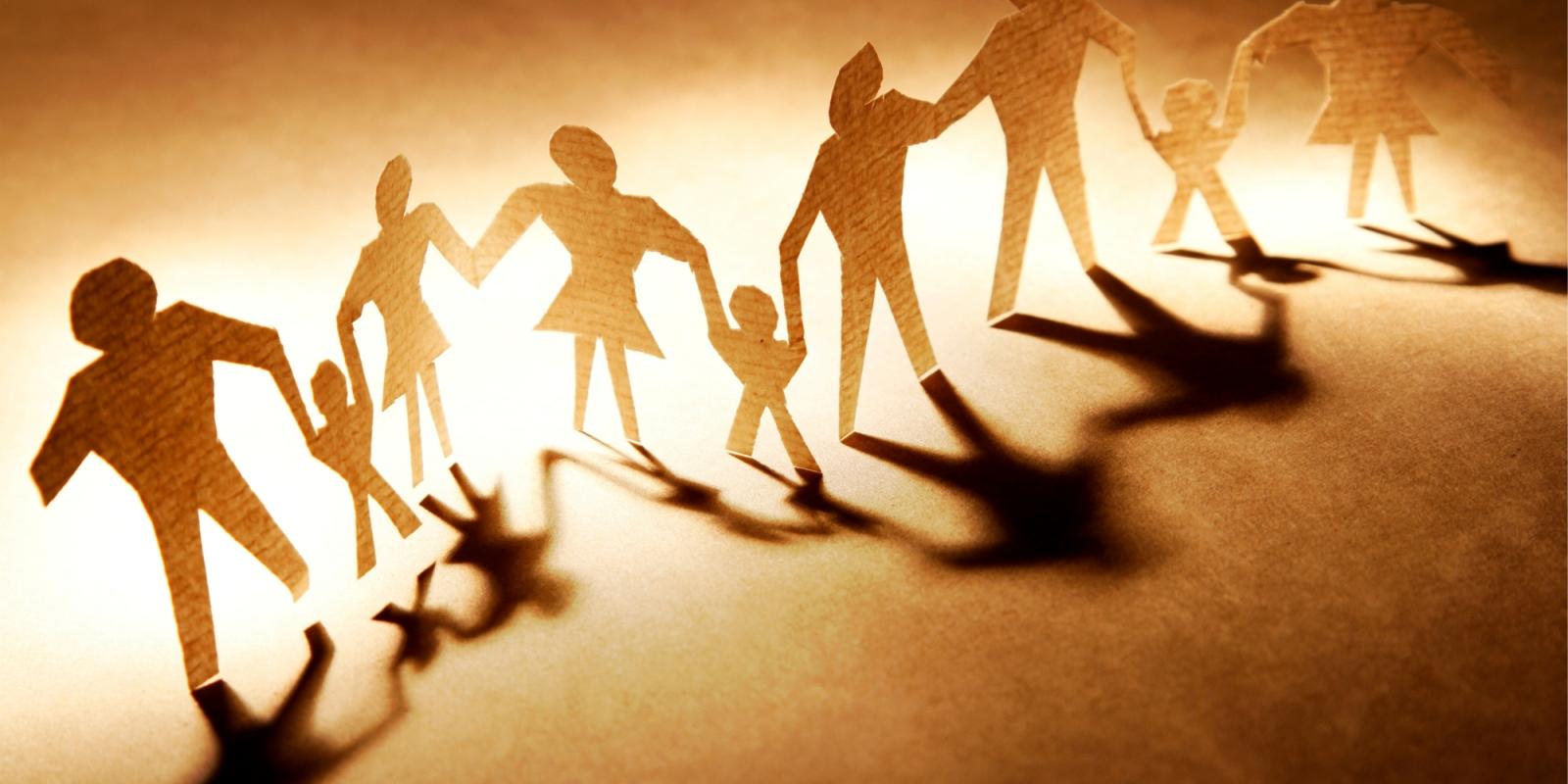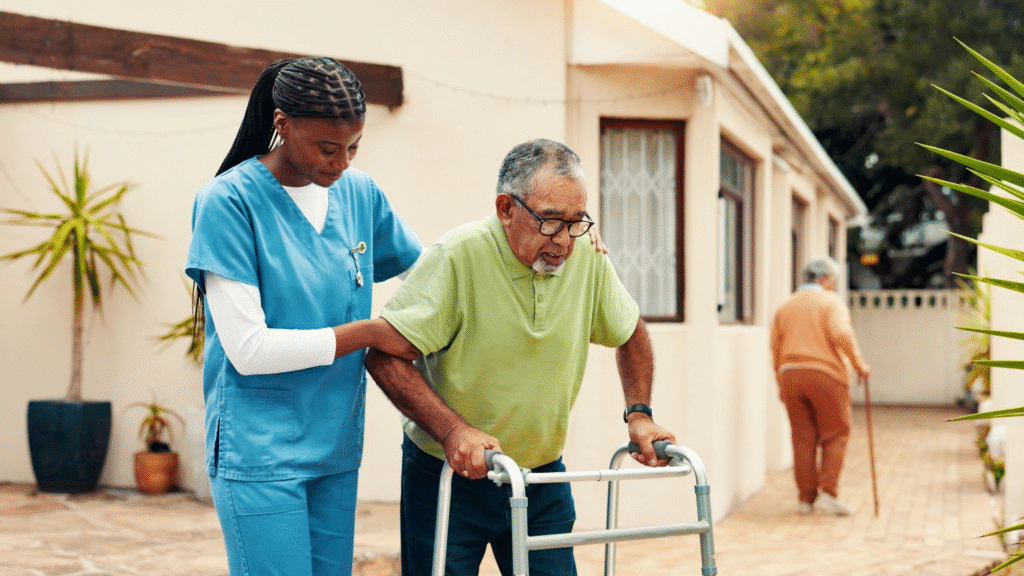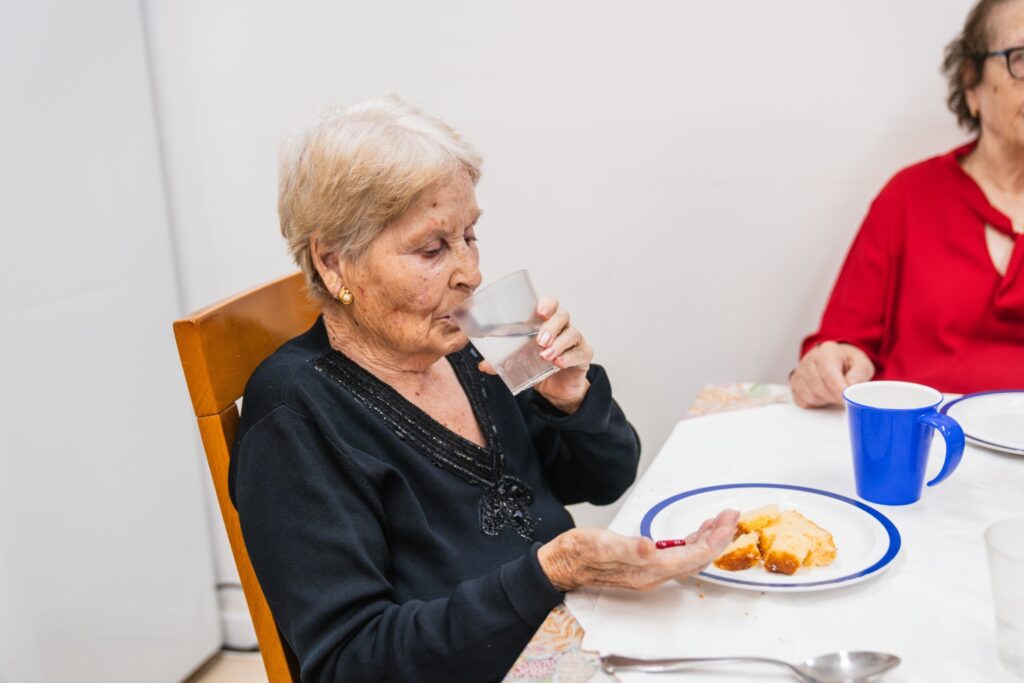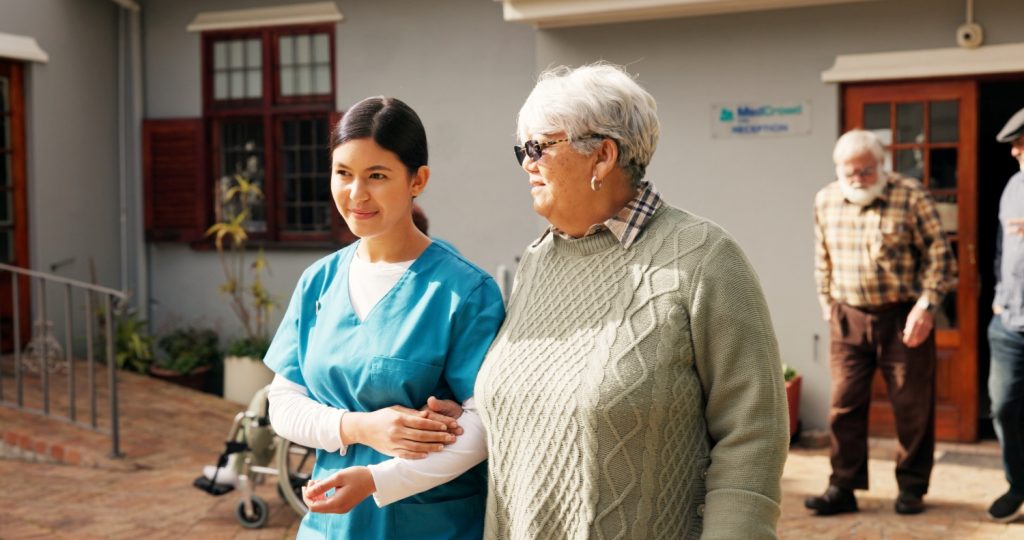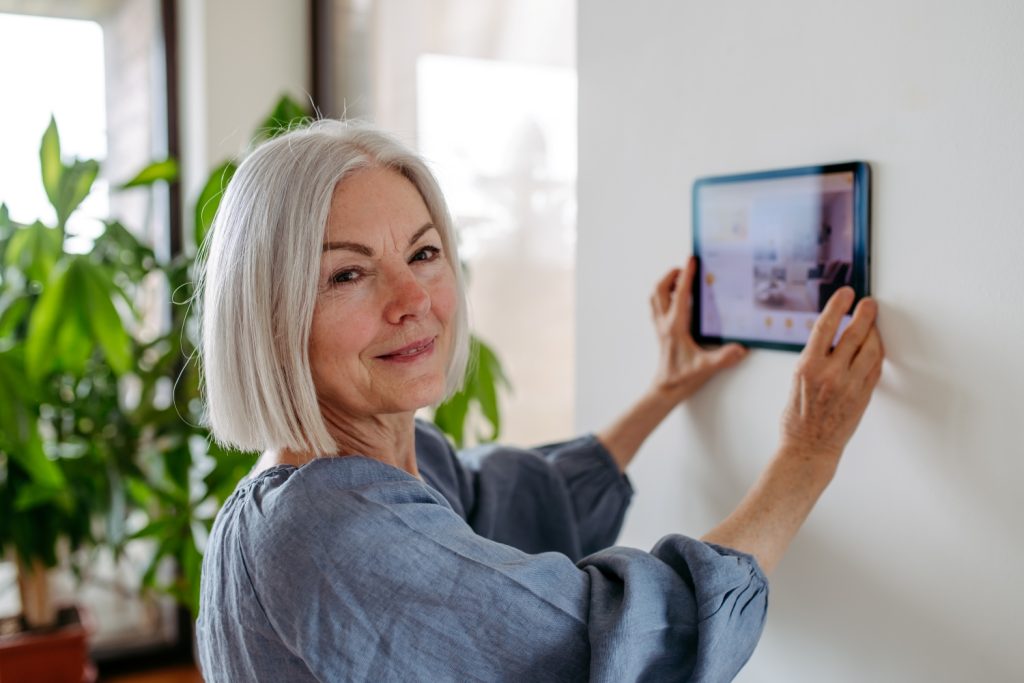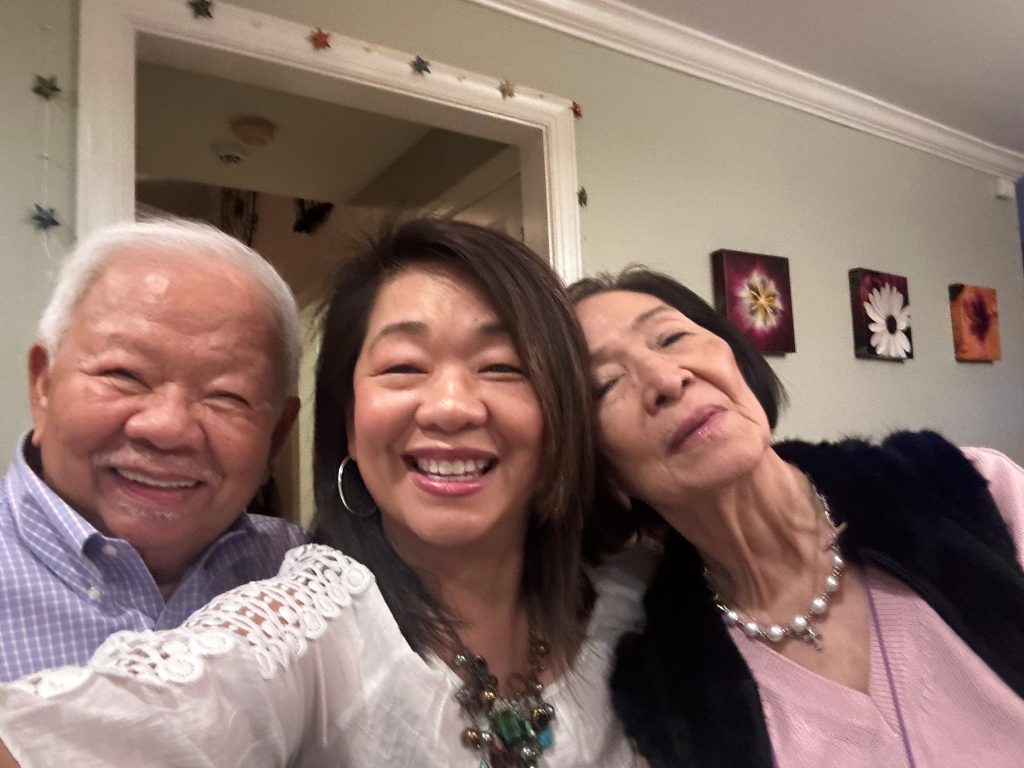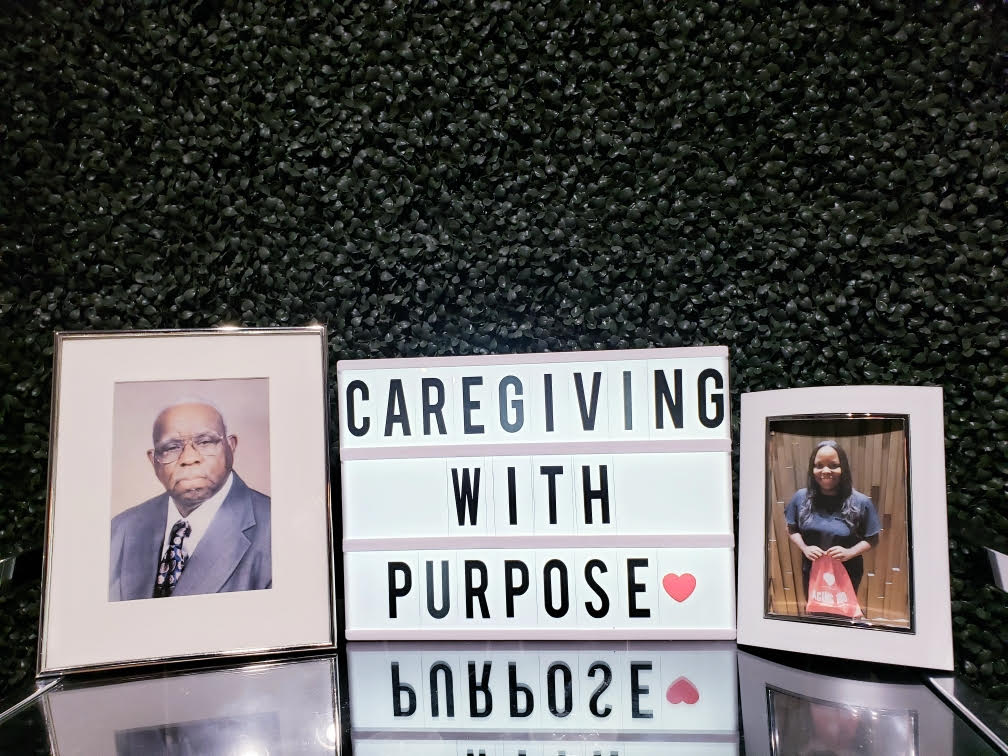Abstract
This article examines how grandmothers raising grandchildren in skipped-generation households tended to their grandchildren’s physical development, including 1) treating illnesses and injuries; 2) alleviating malnourishment and teaching healthy eating habits; and 3) managing prenatal substance exposure. Children’s physical needs often required grandmothers to interact with healthcare providers, which required demonstrating proof of legal authority. Grandmothers raising grandchildren must overcome legal complications to tend to their grandchildren’s physical needs, and they did so by using Child Protective Services to become legal guardians, devising strategies to overcome their lack of legal authority, and taking on the caregiving arrangements required by the state.
Key Words
physical development, physical needs, prenatal substance exposure, parenting, grandparent caregiving, skipped-generation households, grandfamily, kinship care, legal rights/authority
“At first, they were so sick. They were so sick … . So, I got ’em back on they feet. I got ’em on they feet.”
Cheryl’s description of the state of her five grandchildren’s health when they entered her care echoed the experiences of many of the grandmothers raising grandchildren whom I interviewed on the South Side of Chicago. Children’s unanticipated health demands required grandmothers to go beyond preparing healthy meals, curing routine ailments (colds, flu, broken limbs), and ensuring regular doctor check-ups.
In many cases, caring for children’s health involved 1) treating illnesses and injuries; 2) alleviating malnourishment and teaching healthy eating habits; and 3) managing prenatal substance exposure. Getting and keeping their grandchildren healthy often involved accessing healthcare, which required that grandmothers demonstrate proof of legal authority. To access healthcare they presented the child’s medical card, provided proof of legal guardianship, and/or used their Department of Children and Family Services (DCFS) paperwork or used a caseworker. In lieu of legal rights, they devised strategies such as building trusted relationships with medical providers, relying on parents, and giving verbal confirmation of legal authority even when they did not have it.
Treating Illnesses and Injuries
Cheryl, whose quote begins this article, described her five grandchildren’s health when she assumed responsibility for them:
“Shandra had ringworm all in her head, all over her body. And Jamal had ringworm stuck all on his skin … from sleeping on the floor on nasty stuff. I took ’em to the doctor. I put antibacterial on it and all. … I went through shit. And they was half-eating. They used to half-eat.”
Cheryl, 52, took pride in nurturing her grandchildren (Tevin, 19; Keith, 16; Shandra, 13; Jamal, 10; and Sienna, 8) back to health.
She said, “Sienna just as fat now as she could be. She big, she weighs more than Jamal. And Shandra you look at her … how much you think she weigh? She 13 years old and weigh 273 pounds.” Cheryl was able to get her grandchildren medical attention by calling DCFS and was given “the number to the guardianship program … they come out, fill the papers out, and told me I had to go to court in front of the judge. And that’s how I got it.”
Like many grandmothers, Cheryl became her grandchildren’s legal guardian to ensure they remained in her care and to secure desperately needed resources and services, specifically public aid benefits—medical cards, cash assistance, and Supplemental Nutrition Assistance Program (SNAP). In addition to getting proper diagnoses for her grandchildren and treatment for their developmental disabilities and other medical conditions (eczema, vision problems, and asthma) Cheryl was able to get Supplemental Security Income (SSI) for her grandson Tevin. At the time of the interview, Cheryl was in the process of taking Shandra “to the La Rabida Hospital and putting her on that weight-loss program.”
Michelle, 47, didn’t know she was a grandmother until one day her son Curtis called and said, “Mama, I need a favor. Mama, see I got a son. I only got one child by her. And DCFS ain’t quite in her life, but it’s been in her life. So, I’m gonna need you, if you can, take care of my son.”
Not only did Curtis need his mother to take care of his son Efrem, but he also needed her to manage her grandson’s child welfare system involvement. Efrem’s mother, Khalima, had four other children who were all in the care of relatives serving as kinship foster care providers. The reason the initial DCFS case was opened was never made clear to Michelle. But both the caseworker who contacted Michelle and Khalima shared a similar story that largely had to do with living in impoverished conditions, neglect, and not fulfilling the permanency plan (also known as reunification program or case plan) needed to get her children back.
Permanency plans are services that must be fulfilled by parents to be reunited with their children, including parenting classes, rehab, therapy sessions, and so on. According to the caseworker, Khalima wasn’t “applying to her service,” the house had too many inhabitants, “the baby’s not properly in clothing. The baby nasty. … The baby’s not eating properly,” and it was Curtis who “takes care of the baby most of the time. Khalima either there or not there.”
‘Sixty-three-year-old Martha’s story exemplifies how some children’s injuries that grandmothers had to get treated were caused by a parent.’
Voluntary placement agreements (VPAs) “can be voluntarily agreed upon by parents or guardians without formal removal of children from their homes and placement into kinship care; or when children are ‘constructively’ removed from their parent’s or guardian’s home while they are being looked after by another caregiver on a temporary basis” (Pittman, 2023, p. 263). For Michelle, the shock of being a new grandmother, a young grandmother, and a grandmother of a grandchild who came into her care through a voluntary placement agreement was complicated by trying to get the required documentation (birth certificate, medical card) to care for an infant. She had only recently received his temporary medical card when Efrem had his first asthma attack in her care.
She described, “So, within that time [of seeking the necessary documentation] one night he started gasping. I’m like, ‘Baby, what’s wrong with you?’ He was coughing a lot, so I thought it was a cold, but … he was starting to change color, and I’m like, ‘Oooh we got to take him to the emergency room.’ Shot him to the emergency room. Come to find out he was getting an asthma attack … Lord forgive me with the words, ‘Them kids didn’t let me know a damn thing … Making me go through all of this! That’s the first thing they should have told me about.’ ‘Well mama he got this and you know?’ … Lord Jesus, at the hospital, ‘Who is the mama? Where’s the mama?’ ‘I am the mama right now. No, you don’t know all that paperwork.’ I said, [Laughter] ‘Right now he just needs to be seen.’”
I said, ‘I’m the guardian. I’m the grandmother.’ [They said,] ‘Okay. Well grandmama just calm down. He’s just goin’ through an asthma attack. We just gonna put him on a machine.’ And he fightin’ and stuff like that. Don’t want it on his face and stuff. Got to hold him down. And, tryin’ to get him to breathe, and finally, she gave him a couple of Tylenol, Motrin, and he calmed down.”
Michelle was simultaneously furious and afraid. They kept Efrem overnight, connected Michelle with his pediatrician, and gave her “one of the breathing inhalers, pump sprays like that. And told me to spray at the first sign of coughing most time, that’s how it starts, the cough starts coming in and stuff like that.”
After being scolded by Michelle, Curtis and Khalima brought her Efrem’s asthma medications. As Michelle cared for Efrem over the next 3 years, she continued to manage his asthma and got him treated for vision problems.
Sixty-three-year-old Martha’s story exemplifies how some children’s injuries that grandmothers had to get treated were caused by a parent. Martha learned from her oldest daughter, Terri, that Kellen (a grandson who Martha had raised) and his girlfriend, Erika, were abusing their 1½-year-old twins, Akram and Akria, and 2-year-old Phallon. She was told of and later witnessed the parents neglecting, beating, and verbally abusing the children but did not live close enough to intervene.
With the children’s grandmother unwilling to assume responsibility for her grandchildren and Erika estranged from her family, Martha saw no alternative but to increase her involvement with her great-grandchildren. But at that point, her intentions were only to help the young couple parent better. Martha got an opportunity to intervene when Kellen asked if he could come home. She rented a truck, moved Kellen and his family into her home, gave them a room, and confirmed her suspicion of child abuse. But, Martha reasoned, Erika was also contending with intergenerational trauma:
“They was neglecting ’em. They was beatin’ the little 2-year-old girl. One time she [Erika] had whipped her so until that baby had bruises all on her back. … I think something’s wrong with her [Erika] because she came up in the system. Everybody came up in the system is not bad, but … she was abused before she got in the system.”
Since Erika had been sexually abused by her mother’s boyfriend, Martha reasoned that she might not view her behavior as abusive. But when Martha tried to provide parental guidance, Erika made it clear that she did not want to be told how to raise her children. “I had to call the police on her,” Martha disclosed, “because she had even threatened me.”
Eventually Martha realized that she could no longer keep her great-grandchildren safe in her capacity as their grandmother. Despite Martha’s compassion for Erika, she could not permit child abuse: “And I talked to her, I pleaded with her. And I told her if they keep on, I was gonna call DCFS on ’em. So, I did.”
When, like so many grandmothers in this study, she was pushed to using or threatening to use punitive institutions to protect her grandchildren, Martha called DCFS, and Kellen and his family left her home. When, a week later, they returned because they had nowhere else to go, Martha told them the children were welcome, but not Erika.
She said, “They wouldn’t even bring me they shot records because they hadn’t been taking the kids to the doctor. I had a hard time.” She called a local social service agency providing support to kinship caregivers and they helped her become her great-grandchildren’s legal guardian and to gain access to the resources and services the children needed.
Martha stated, “They wouldn’t let me take ’em to the doctor and I knew the kids needed to go to the doctor. They wasn’t sick or anything but they needed to go to the doctor and I was worried about they shots. So, they [social service agency staff] told me how to go about getting medical cards for the kids. I got the medical cards for the kids and the kids is on my food stamps … . So it’s just that they needed medical attention … and to help me buy food.”
Martha, Michelle, and Cheryl’s stories show that because of the often abrupt and unexpected nature of grandparent caregiving, grandmothers frequently had to immediately address their grandchildren’s neglected health. Their stories demonstrate the necessity of legal authority (or strategies in the absence of legal authority) among grandparents trying to get their grandchildren the healthcare they needed.
Alleviating Malnourishment
Malnourished children were described by grandmothers as “small for their age” or “barely eating.” Their poor and irregular eating habits were evident in stunted growth, rotten teeth, and difficulty consuming healthy foods. In response, grandmothers went to great lengths to ensure their grandchildren were adequately fed.
Lottie, 58, and her husband had been compelled to provide care when Lottie’s newborn granddaughter Audra tested positive for drug exposure and the hospital contacted DCFS, who transferred care of Lottie’s three grandchildren to her via kinship diversion (where children are diverted to kinship care as an alternative to being brought into state custody [formal foster care]. It is used interchangeably with terms such as safety planning, voluntary kinship care, parental placement, redirection, informal kin care, and prevention services.).
‘I got attached to her [Dana] … I would literally go [to her parent’s home] and make sure she ate … I was gonna make sure she ate.’
When Rachel couldn’t regain custody because of substance addiction and untreated mental illness, Lottie became their legal guardian. Lottie described how her two grandsons (9-year-old Garrian and 7-year-old Joshua) were malnourished when they entered her care, as well as her strategy for nurturing them back to health:
“When I got ’em they were real thin. I told ’em, ‘God, y’all are so skinny you could pass between two blocks of rain and not even get wet.’ So, when I started to feed ’em I say, ‘You eat ’til you get full. So now they full because they big.’ ”
Before becoming her grandchildren’s primary caregiver, Lottie participated in the EarnFare program, which “is designed to provide adults who receive SNAP benefits and who volunteer an opportunity to gain valuable work experience, earn cash assistance, and become self-sufficient” (Illinois Department of Human Services, n.d.). After assuming responsibility for her grandchildren, Lottie parlayed her volunteer experience into a full-time job at a branch agency of DCFS. She relied on her job, which not only paid her but gave her access to the food pantry, to keep her grandchildren well fed.
“Audra, she likes sardines. She loves them so I get little snacks like that. Then I got one that’s allergic to peanut butter and one that’s allergic to shrimp, any kind of seafood. So, I’m saying, I try to build my little grocery thing around whatever y’all need now come and ask me.”
Audra, Garrian, and Joshua were 11, 17, and 15 at the time the interview was conducted, and Lottie took comfort in that “they all good, they in good health.”
When 41-year-old Shalonda decided to care for her newborn granddaughter, Dana, it was because of the home conditions of Dana’s parents. In addition to their home being unclean and having rodents, Shalonda was dismayed that Dana’s parents weren’t adequately feeding her. Shalonda described how the culmination of these circumstances compelled her to become her granddaughter’s legal guardian:
“I got attached to her [Dana] … I would literally go [to her parent’s home] and make sure she ate … I was gonna make sure she ate. I didn’t take her home without feeding her. If she went home! I even was paying bills over there to make sure they had a phone so I could check on her.”
Eventually, Dana’s mother began to leave the infant in Shalonda’s care for extended periods of time: “So, I just kinda took her and then when the daycare was up and I couldn’t take her I just called up here at child parent neglect.” When I interviewed her, Shalonda had been raising Dana for 7 years.
Faith, 48, described her granddaughter Schuyler’s state when she called DCFS upon learning the child had a black eye:
“When they [DCFS] took her out, she was muddy—and when I say muddy, she was dripping with pee-pee and dirt. No shoes on. Pamper was sagging like she had the Pamper on for about three days. And her hair was all over her head … She was screaming and hollering too. They jumped in the car and took her straight to the hospital … She was unnourished, teeth was rotten; teeth still is rotten across the top.”
After leaving the hospital, Schuyler spent 7 months in a non-relative foster home. When Faith became Schuyler’s foster parent, she prioritized nurturing her back to health: “Yeah, my daughter say when they [parents] was staying with her that … the girl went and bought about 13 gallons of that juice. No milk. No food.”
They also fed the toddler fast food. Faith made sure that 3-year-old Schuyler ate real food, regardless of whether she felt like cooking: “Sometimes I don’t feel like putting anything in my mouth, but I still make a meal for her because I have to make sure that she eats regardless if I want to eat or not … I don’t feel like it, but I do cook.” Faith was also addressing Schuyler’s rotten teeth: “I took her to the dentist, but she need some kind of caps for rotten teeth.”
Grandmothers also instituted unfamiliar daily regimens, creating conflict with grandchildren and testing their own patience. May, 58, described what it was like introducing her granddaughter to healthy foods:
“I cook, but she be wanting that frozen dinner mess because she so used to having frozen dinners. And like she like oodles and noodles and Vienna sausages, peanut butter and jelly, and bologna. My kids didn’t even eat that mess. … I got up and I cooked seven-course meals. … She getting into it, but sometimes she tell me, ‘I don’t eat that.’ I said look, ‘I don’t run no restaurant. [Laughs.] You don’t wanna eat that, you just ain’t gonna eat.’”
Despite her own poor health, May wanted to make sure that her granddaughter was well nourished and accustomed to real food. So, she cooked for her every day. She also let her tantrum while insisting on healthy foods. Although McKayla was 7, May maintained that “last year she could’ve got on the bus and passed as a 4-year-old. That’s how small she was.” McKayla was still wearing “sizes 4 or 5T [toddlers].”
Grandmothers cooked for their grandchildren, whether they felt like it or not, and often despite their own poor health, to nurture their grandchildren back to health. They catered to their dietary cravings, but also bore the brunt of children’s anger in the absence of the junk food they may have been accustomed to.
Managing Prenatal Substance Exposure
Twenty-one parents in my study were grappling with substance addiction and two more were in recovery and rehabilitation. What this meant for some of the grandmothers that I interviewed was that they 1) needed to rescue their grandchildren from being taken into state custody (mostly as kinship foster care providers or through kinship diversion); and 2) had to manage the impact of prenatal substance exposure on children’s health, which ranged from no impact to lifelong developmental disabilities.
Helen’s experience typified what happened when grandmothers stepped in to raise a grandchild because of prenatal substance exposure, which didn’t negatively impact the child’s health. When her newborn grandson Ebere was born with prenatal substance exposure, Helen, 48, assumed primary responsibility for him through kinship diversion. According to Helen, Ebere’s mother Sonya struggled with an untreated mental illness. Moreover, when she gave birth to Ebere, she couldn’t be left alone with him because someone had put something in her weed causing her to “trip off.”
‘What was that like? … I did not believe what I was doing. Hell, this ain’t my child!’
Given her state, Helen didn’t expect much help from Sonya with respect to raising Ebere, but she did expect her 27-year-old son Nicholas—the boy’s father—who was living with her at the time, to help her care for the baby. But when she asked Nicholas to “take him to the clinic or get the WIC (Women, Infants and Children Supplemental Nutrition),” he would tell her things like “I ain’t got time for that.”
So, she became responsible for ensuring that Ebere got to his doctor’s appointments and got the resources he needed, including applying for a medical card. Helen only had to take him to the doctor “if he was sick … If he got sick with a cold or anything I’d take him.” When I asked what it was like when she first got her newborn grandson she shared:
“Oh, let me see … what was that like? … I did not believe what I was doing. Hell, this ain’t my child! [Laughs.] Shit. I was like this is not my child … . I’ll tell you it’s a trip. … I am angry somewhat because it’s stopped my life … It was hell and back. (Chuckles.) Hell and back. This was a newborn child. I’m not young no more. I could still deal with it if I choose to deal with it, but this is forced on me to deal with.”
Ebere was attached to his grandmother to the point that he rarely left her side apart from her working and him attending daycare. Helen described him as “real smart. There’s nothing he can’t catch on.” She acknowledged that while some children born with prenatal substance exposure “got some issues, I guess it didn’t affect him like that.” At the time of the interview, Ebere had been in her care for 5 years and was just beginning to sleep in the bed she’d bought him. Nicholas’ lack of involvement worsened when he began to use the crack he was selling. Helen’s need to navigate childrearing institutions without having to “track him down” led her to obtain guardianship of her grandson.
Fifty-one-year-old Tamara was raising four of her grandchildren (ages 18, 17, 10, and 8) as a kinship adoptive parent. Ladonna, one of Tamara’s four children, lost her children to state custody because of her substance addiction. When Tamara first stepped in, the oldest three children “stayed in the system about seven months. … I never missed a visit. I never missed a court date. … I love my grandkids and that’s the only way I could see ’em… they don’t give us no visits.”
The DCFS caseworker helped Tamara become the children’s unlicensed kinship foster care provider. Soon after Tamara assumed responsibility for her three grandchildren, Ladonna had another baby: “The hospital called, I go pick him up. And after then she went crazy. Every nine months she was having a baby.” Ladonna had 13 children, and Tamara and her partner of 12 years couldn’t take them all, a decision she still struggled with.
“I couldn’t deal with all those kids. And she got one, two, three … she got three handicapped kids. And I couldn’t do that. You know that take a lot of time. My hip messed up now … I prayed to God. I said, ‘God, don’t feel like this is something that I didn’t wanna do. I just can’t do it.’ ”
A family member took three of the children and the rest were placed in non-relative foster care. Tamara shared her experience of dealing with DCFS as she cared for her grandchildren with prenatal substance exposure:
“You got drug-ridden children. You know ’cause I got ’em. You know they hyper. You constantly got to run, run, run, get this medicine for them. You got to sit up in these meetings. You got to pay out your pocket to get there. They don’t come bring you no bus card. You got to do that yourself. And if you care anything about this child, you’re gonna get ’em there. You know because it’s bad when you see your child or your grandbaby, if you care anything about ’em, just laying in there rockin’ and cryin,’ just rockin’ and cryin.’ ”
She continued, “And they’re busting out in sweat and stuff and you’re praying to God, what can I do for this child? When they’re having withdrawals. You know? I done been there. I got two of ’em in the back. And they were, I just look at ’em, some growin’ out of them now but I feel like it’ll be there for the rest of their lives. They don’t know. They just bring those kids to us, and they drop ’em off and do a lot of paperwork and come back the next month and look and see if they’re ok. If the house is clean. Everything’s A-okay. It’s not A-okay. It’s not.”
Tamara divulged that years later, she could still see the impact of prenatal substance exposure on two of her grandchildren. Since caring for them, she had gotten her grandchildren the care they needed by explaining her status as a grandmother and by demonstrating her legal authority (e.g., DCFS documentation and the children’s medical cards): “I have no problem. Even when I say, ‘I’m their grandmother.’ Because basically the hospitals and the schools they know what’s going on with these six kids [her 4 grandchildren and 2 great-grandchildren] so …” At the time of the interview, Tamara had been her grandchildren’s adoptive parent for 8 years.
Eighty-one-year-old Louise became the licensed foster parent and later the adoptive parent of three of her grandchildren when their mother Melissa refused to take training courses to help her care for her premature, substance-exposed baby. Fearing that she might get into trouble, Melissa left Cole at the hospital and the doctors contacted DCFS. When DCFS investigated, they removed Cole and his two older siblings from Melissa’s care because of her substance addiction. Because Clinton, the children’s father and Louise’s son, was in prison, it was up to Louise to undergo training to care for Cole.
She said, “His mother left him at the hospital. He didn’t weigh 2 pounds. He was tiny, tiny, tiny. … when I got him, he was 8 months old … And he was hooked up to everything, too. He had a heart monitor, he had oxygen … he just had everything. I had to take the training for his inhalation therapy and everything to work with him.”
Louise remembered being contacted by a caseworker and going down to Michael Reese Hospital where the caseworker “puts them two [12-year-old Sophia and 10-year-old Clinton Jr.] in my hands.” She gave her “some little medical cards for them” so that she could take them to the dentist and doctor. In addition to carrying around Cole’s heavy iron oxygen tank, Louise had to carry him in a special-needs stroller, which was heavier and more cumbersome than a traditional stroller. As a single grandmother caring for her three grandchildren in the wake of the recent death of her husband of more than 40 years, Louise remarked of those early days, “It was rough.”
At the time of the interview, Louise was still undergoing training to care for her 14-year-old grandson, who had been enrolled in Special Education classes his entire school tenure. These courses, facilitated by the DCFS and Illinois State Board of Education, were designed to assist caregivers in attending to developmental disorders and navigating the Special Education system.
Helen’s, Tamara’s, and Louise’s stories show the ways in which prenatal substance exposure required grandmothers to care for grandchildren with child welfare system involvement. Consistent with other research, the children in this study being cared for in the formal kinship care system were more likely to have experienced more severe child maltreatment than children being cared for by grandmothers who provide informal kinship care (Pittman, 2023).
Conclusion
When thrust into the primary caregiving role, grandmothers expected that meeting their grandchildren’s needs would be challenging given their age, poor health, limited resources, and, for many, their struggle to accept the idea that they were raising a child “all over again.” Still, they revived old childrearing strategies and devised new ones to respond to their grandchildren’s physical needs. They sought healthcare for grandchildren with illnesses and injuries in much the same way they had for their own children, but they also devised strategies to overcome their lack of legal authority or provided proof of legal authority so that their grandchildren could get the medical treatment they needed.
Importantly, the grandmothers in my study had limited (if any) access to nonpunitive institutions (the police and CPS) to obtain the legal rights they needed to provide adequate care. Their stories demonstrate the legal complications grandparents faced as they tended to their grandchildren’s physical needs. Still, grandmothers took pride in fattening up malnourished children and exercised patience as they acclimated their grandchildren to healthier foods.
Grandmothers caring for children with prenatal substance exposure managed kinship foster care or kinship diversion and took on the caregiving arrangements required by the state.
Also emerging from my data was a picture of the way in which the unanticipated demands of care work could prove to be too much not only for grandmothers’ individual resources, but also for those in their familial and extended kinships networks. Thus, grandmothers used institution-based networks to get their grandchildren assessed and treated, seeking institutional assistance for their grandchildren based on their ability to meet eligibility criteria, convenience, and familiarity.
LaShawnDa Pittman, PhD, is an associate professor of American Ethnic Studies and the Joff Hanauer Honors Professor of Western Civilization at the University of Washington in Seattle.
Photo credit: Shutterstock/Gendis Images
References
Illinois Department of Human Services. n.d. EarnFare. https://www.dhs.state.il.us/page.aspx/?item=31772
Pittman, L. (2023). Grandmothering while black: A twenty-first century story of love, coercion, and survival. University of California Press.

